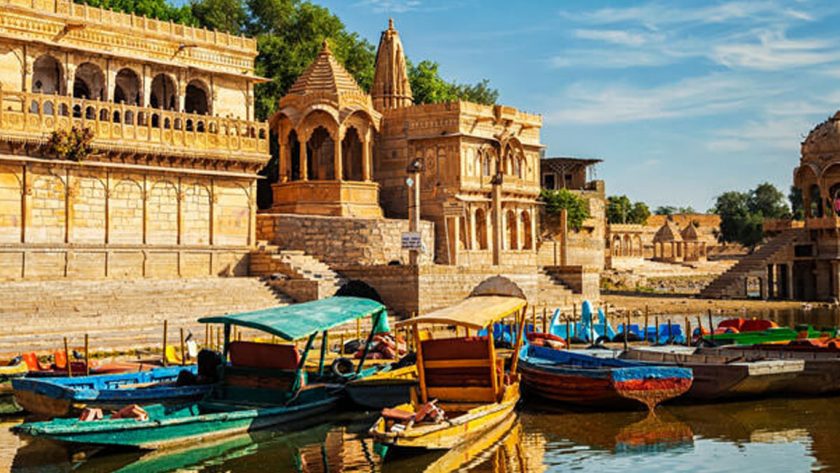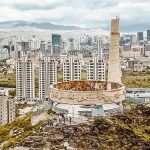Mcleodganj, India, is a curious meeting of worlds. It is the home of the Tibetan government in exile, yet it resides in the Indian Himalayas. Though India has a Prime Minister, the figure most people in Mcleodganj look to is the Dalai Lama, the highest spiritual and political leader of Tibet.
The Dalai Lama fled Tibet in the late 1950’s during political turmoil and relocated the government to Mcleodganj. The cultural collision of Tibet and India and the people I met there stuck with me through 4 months of travel in Asia. One moment from my three weeks of volunteer work remains so vivid I can still recall the colors and movements of spinning prayer wheels at the temple with my class of Tibetan monks, my hand echoing theirs.
We pulled into Dharamsala late one night, about 5 kilometers below Mcleodganj Fighting our way into a crowded jeep, pushed aside by the tiny Indian ladies who know what the process of catching a ride up the road is all about, we drove into the other world of Mcleodganj. The Hindu signs are replaced by Tibetan scrawl. Saris are replaced by the burgundy robes of Tibetan monks. My friends and I often joked we were in “Little Lhasa,” and when we returned to Dharamsala we said we were returning to India. In retrospect, I wonder what we meant by that phrase, “returning to India.” Were we going back to the India of National Geographic, the images of the Taj Mahal and the Ganges? India is one of the most diverse countries in the world – there are a million facts that point to India’s multiculturalism, from the range of architecture you see as you travel through the country that India has more than 5 official languages. Perhaps Mcleodganj is one of the most typically Indian places.
It quickly became apparent that tutoring is the most viable option for volunteering, as just about everyone in Mcleodganj wants to learn English. It also quickly became apparent how friendly and helpful the people are. Unlike many places that are hesitant to set up volunteers for short periods of time, the people who helped us had none of the blase or tired-of-do-gooders attitude that I have encountered, often rightfully so, elsewhere. Everyone who helped me displayed a generosity that could sometimes be overwhelming. I often found myself eating a second meal as eager faces encouraged me to take more food, or have another cup of butter tea. Though many say it is an acquired taste, I found my limits of politeness drawn at one cup.
For three weeks, I tutored one man in the mornings and taught English with my two friends to a group of monks and staff at the monastery where we stayed in the evenings. If nothing else, I gained infinite respect for teachers in my three weeks of tutoring. It required never-ending patience and ingenuity, which I often did not possess, to tutor someone very limited in English and myself with no comprehension of Tibetan. Similarly,our class at night faced many challenges. After about a week and a half of sincere, honest attempts at creating lesson plans and assigning homework, the class deteriorated into fun and games in English. Deteriorated, or progressed, depends on your point of view. Our class varied from eight to ten people every time, but without fail each evening we were told to be quiet as our laughs filled still night air. In our class, we had a final project of sorts. A night before we left Mcleodganj we brought our class of shy monks, cooks and caretakers down to the local open mic night. After several well sung songs and poems addressing issues of import, we did a heartfelt, if not sonorous, rendition of Bob Marley’s ”Three Little Birds.” The nervous anticipation that preceded the climax of three weeks of forming friendships and word games in English was large enough to lead to one false start and several attempts to escape our herding hands. That was also the night we spun the small wheels that send prayers into the universe at the temple downtown. The Tibetans’ easy inclusion of me in their daily ritual is a poignant memory, as much as the gigantic smiles after singing or the happily linked arms as we walked back to the monastery.
The idea of India’s multiculturalism is nothing new. The country has been facing ethnic divisions for centuries, from Hindus to Muslims to Sikhs to Jains. With the acceptance of the Tibetan government in India, a unique tradition was maintained, the inclusion of yet another culture into the mosaic. The country’s support of the Tibetan community is by no means perfect , and Tibetans still face many of the problems all refugees face. There are tensions between the Hindu community and the Tibetan community. But there is assimilation occuring, a blending and acceptance of cultures. The more you take that bumpy transitional road down from Mcleodganj, the more you see the same crowded streets and narrow stores filled with endless tea and pots of unknown curries that are in Dharamsala, and the idea of Little Lhasa disappears.
Recently, Mcleodganj has become even more of a popular destination that it was in the past – it now merits a small box on the Lonely Planet’s full color map of India labeled with ‘places of interest’ to the tourist. Despite the presence of so many tourists, the people I met there remained warm and made me feel as though I was more than just another volunteer in a string of volunteers to show up. Spinning prayer wheels behind the monks remains one of the most vivid memories I carry with me today, and maybe in a century the image of spinning prayer wheels will be just as analagous with India as are the burning ghats of the Ganges.



